Each bite of these cupcakes was a moist, chocolate heaven! I made a batch of 16, and oh boy, they were sinfully delicious!

Say hello to our fabulous Chocolate Cupcakes Recipe, a dessert destined to make your day! Each cupcake, featuring the magic of cocoa, the smoothness of butter, and the simplicity of sugar, is an ode to the art of baking that will tickle your taste buds and light up your dessert table.
Just imagine sinking your teeth into a cupcake so fluffy and moist, the rich chocolatey goodness meets your palate, painting a vivid picture of the cocoa tree, the mystical plant that was once considered a divine gift by the Aztecs. As you savor the sweet sensation, a dash of vanilla essence whispers tales of Madagascar, the island nation that holds the baton of the world's leading vanilla producer.
But wait, there's more! With every bite, you'll also be saluting to the ingenuity of bakers from the 19th century America when cupcakes first made their appearance. As simple as they are delicious, these cupcakes were originally baked in teacups, hence the name 'cupcakes'.
From a humble kitchen experiment to a universal symbol of joy, the journey of the cupcake has been quite a ride. Now, it's your turn to become a part of this rich heritage. With our easy-to-follow recipe, you'll not only be creating tasty treats, but also memories to last a lifetime. So, grab your baking hat and let's get started!
JUMP TO:
INGREDIENTS:
Sugar: Opt for pure, granulated white sugar for the best results. Sugar not only adds sweetness but also contributes to the moisture content and the texture of your cupcakes.
Milk: Full-fat milk is ideal for making cupcakes as it ensures a moist and tender crumb. However, if you prefer a lighter version, low-fat milk can also be used.
All-Purpose Flour: When selecting your flour, ensure it is fresh, and store it in a cool, dark place to prevent it from turning rancid. All-purpose flour is chosen for its medium protein content, which results in a tender crumb structure in cakes and cupcakes.
Eggs: Always use fresh eggs, preferably at room temperature for best results. Eggs provide structure, leavening, and moisture to your cupcakes. Large eggs are usually used in baking recipes.
Cocoa Powder: Use unsweetened cocoa powder to maintain control over the sweetness of your cupcakes. The quality of cocoa powder can greatly affect the flavor, so it's best to go for a high-quality brand. Dutch-process cocoa powder can also be used for a deeper, more robust chocolate flavor.
Butter: Always use unsalted butter in baking unless otherwise stated. This allows you to control the salt content in your recipe. Ensure your butter is at room temperature before using it.
Vanilla Extract: Opt for pure vanilla extract over artificial vanilla flavor for a more natural and richer taste. Vanilla enhances the flavors of other ingredients and adds a wonderful aroma.
MAIN STEPS:
Preheat the Oven: This step sets the stage for even cooking. An oven that isn't fully preheated can lead to unevenly baked cupcakes or even a change in texture as the batter will be waiting in the oven to heat up rather than baking immediately.
Creaming Process: During the creaming process of sugar and butter, it's essential to aim for a fluffy texture. This stage determines the lightness of your cupcakes, as it incorporates air into your mixture that helps your cupcakes rise during baking.
Egg Addition: It may seem arbitrary to add eggs one at a time, but it's crucial for a smooth, emulsified batter. Adding them all at once can overwhelm the fat in the butter, leading to a curdled-looking batter.
Sifting: Sifting dry ingredients might seem like an optional step, but it breaks up any clumps in the flour or cocoa powder, leading to a smoother, lighter cupcake.
Combining Wet and Dry Ingredients: When combining your wet and dry ingredients, make sure you're gentle. Overmixing the batter after the flour is added can develop the gluten in the flour leading to a dense, tough cupcake.
Batter Distribution: When distributing the batter into the muffin pan, consistency is key. Uneven amounts can lead to some cupcakes being over or under-baked. An ice cream scoop can be a handy tool for getting an equal amount of batter in each muffin cup.
Baking and Cooling: A toothpick test can ensure your cupcakes are fully baked. Overbaking can lead to dry cupcakes, so as soon as that toothpick comes out clean, take them out of the oven. Additionally, cooling before frosting is vital. Applying frosting to warm cupcakes will cause it to melt and slide off.
SERVED WITH:
Starter: Greek Salad (Greece): This is a refreshing salad made with juicy tomatoes, crisp cucumber, sliced red onion, green bell pepper, crumbly feta cheese and plump Kalamata olives. It's typically dressed with olive oil and red wine vinegar, adding a tangy lightness that can balance the richness of the cupcakes.
Soup: Tomato Basil Soup (Italy): A warm, comforting soup made with ripe tomatoes, fresh basil, and a touch of garlic. It's usually finished off with a swirl of cream to create a velvety texture. This soup would make a great precursor to chocolate cupcakes, as the acidity of the tomatoes could cut through the sweetness of the dessert.
Main Course: Lemon Herb Roasted Chicken (France): Roasted to golden perfection with a crispy skin, this chicken is seasoned with a medley of fresh herbs and a squeeze of zesty lemon. Its light and refreshing flavors will not overshadow the taste of the cupcakes.
Side Dish: Couscous with Roasted Vegetables (Morocco): Couscous grains cooked until fluffy and served with a variety of roasted vegetables such as eggplant, zucchini, and bell peppers. The light, earthy flavors of this dish would complement the richness of the cupcakes.
Dessert: Vanilla Bean Ice Cream (United States): A classic creamy dessert that's versatile and universally loved. Vanilla pairs well with virtually everything, making it a great accompaniment to chocolate cupcakes.
Cake: Angel Food Cake (United States): This is a light, fluffy cake made with whipped egg whites and without butter. The lightness of this cake would be a nice contrast to the denser texture of the cupcakes.
Drink: Cold Brew Coffee (United States): Cold brew coffee has a smoother, less acidic taste than regular hot coffee, making it a perfect companion to sweet desserts like chocolate cupcakes. The coffee's bold, robust flavor complements the cupcakes' sweet chocolatey taste, creating a well-rounded dessert experience.
ALTERNATIVES:
Dessert: Chocolate Tiramisu (Italy): A classic Italian dessert with layers of chocolate-soaked ladyfingers (which can be made using eggs, sugar, and flour), mascarpone cheese, and cocoa powder. The flavours are rich!
Bake: Brownies (United States): Made from cocoa powder, sugar, eggs, and flour, these are dense, fudgy, and perfect for those seeking a more intensely chocolatey treat. Brownies can be a satisfying alternative to the lighter, more airy cupcakes.
Breakfast: Pancakes (United States): A staple of American breakfasts, pancakes can be made using flour, sugar, milk, eggs, and a little bit of baking powder. Serving them with a pat of melting butter on top and a generous drizzle of maple syrup can be a great way to start the day.
Dessert: Chocolate Soufflé (France): This classic French dessert uses a base of egg yolks, sugar, and chocolate, then gets its signature rise from whipped egg whites. The result is a decadently rich dessert that's light and airy, yet deeply satisfying.
Dessert: Vanilla Bean Pudding (United Kingdom): An old-fashioned, comforting dessert made with milk, sugar, vanilla extract, and eggs for thickening. It's smooth, creamy, and the simplicity of the vanilla flavor allows for a range of possible toppings, like fresh fruits or whipped cream.
Bake: Chocolate Chip Muffins (United States): Like a cross between a chocolate cupcake and a breakfast pastry, these muffins are lighter in sugar and use milk, flour, eggs, and baking powder, with the addition of chocolate chips for a sweet twist.
Drink: Hot Chocolate (Mexico): An indulgent drink made with milk, cocoa powder, sugar, and vanilla. This comforting beverage, which originated in Mexico, provides the chocolatey satisfaction of a cupcake in a warming, sippable form.
HISTORY:
The chocolate cupcake, like many culinary creations, is a product of multiple influences and developments. The cupcake itself is a classic American invention, a practical solution born out of the 19th century when time and efficiency in the kitchen became essential. In an era before reliable thermostats, cupcakes baked faster, eliminating the problem of uneven cooking that often occurred with larger cakes. The "cup" in cupcake originally referred to the way ingredients were measured (in cups, rather than weighed), making the recipe easy to remember.
The addition of chocolate to cupcakes was a delightful evolution, one that we owe to the civilizations of Mesoamerica, where cacao beans were cultivated and first turned into "xocoatl," a bitter, frothy drink. When Spanish explorers brought chocolate back to Europe, it became a luxury product, reserved for the elite. It wasn't until the industrial revolution in the 18th century that mass production made chocolate more accessible and affordable.
The first recipe for a "chocolate cupcake" was listed in a cookbook by Eliza Leslie, in 1828. But back then, they were closer to a light cake baked in small cups or molds, rather than the moist, decadent chocolate cupcakes we are familiar with today. The modern version that we're all familiar with came later, once cocoa powder was readily available.
Thanks to the advancements in food manufacturing techniques, cocoa powder became widely accessible in the early 20th century. This opened up new avenues for bakers and led to the creation of our beloved chocolate cupcakes. In 1919, a Boston-based company called Baker's Chocolate published a recipe for chocolate cupcakes, which they referred to as the "single-portion" cake. This recipe used Baker's chocolate and is often cited as the progenitor of the modern chocolate cupcake.

Cupcakes became especially popular during World War II due to rationing, and the chocolate cupcake, with its rich, comforting flavor, was a hit among both children and adults. The introduction of cupcake liners in the 1950s and the proliferation of home ovens led to a boom in their popularity.
Today, the chocolate cupcake is more than just a dessert. It's a symbol of celebration, an expression of love, and a treat that brings comfort and joy. From gourmet versions in upscale bakeries with exotic ingredients and intricate designs to simple homemade recipes passed down through generations, the chocolate cupcake holds a special place in our hearts and our history. Its journey mirrors that of our society's progress and is a testament to the timelessness of good food shared with loved ones.
TIPS:
Frosting: Once your cupcakes have cooled completely, they're ready to be frosted. If you frost while they're still warm, the frosting could melt and make a mess. Consider using a piping bag for a more professional look. And remember, when it comes to frosting, the possibilities are endless – cream cheese, buttercream, ganache – each brings a unique flavor that can complement your chocolate cupcakes.
Experiment with Flavors: For a unique twist, consider adding a touch of instant espresso powder to your dry ingredients. The espresso won't make your cupcakes taste like coffee, but it will enhance the chocolate flavor. Similarly, a splash of bourbon or rum into the batter can add a delightful depth of flavor.
Quality of Ingredients: Opt for high-quality ingredients. Dutch-processed cocoa powder can provide a smoother and more robust chocolate flavor. Similarly, a premium quality vanilla extract can also make a significant difference to the overall taste.
Buttermilk Substitution: Instead of regular milk, try using buttermilk. The slight acidity of buttermilk can make the cupcakes more tender and can also react with the baking soda for a good rise.
Browning the Butter: Brown the butter before creaming it with sugar. Browning the butter will add a nutty and toffee-like flavor to the cupcakes.
Zesting: Add a bit of orange or lime zest to the batter. The citrus note can add a refreshing taste that balances out the sweetness of the cupcakes.
Cocoa-Infused Milk: Warm the milk and steep it with a couple of tablespoons of extra cocoa powder for an additional layer of chocolate flavor. Make sure to cool the milk to room temperature before adding to the batter.
Homemade Vanilla Sugar: Instead of regular white sugar, make your own vanilla sugar by storing a vanilla pod in your sugar jar. This will add an extra layer of flavor to your cupcakes.
Chocolate Ganache Core: After baking the cupcakes, consider injecting a small amount of chocolate ganache into the center of each one. This will give your cupcakes a surprise chocolatey center that oozes out when bitten into.
Flavored Frostings: Consider using unique frostings like salted caramel, raspberry buttercream, or mint chocolate. Each brings a distinctive flavor that can elevate your chocolate cupcakes to a gourmet level.
Signature Garnish: Top each cupcake with a unique garnish. It can be anything from a sprinkle of sea salt, a dusting of edible gold, a fresh berry, or even a small mint leaf. Not only does this add visual appeal, but it also makes every bite interesting.
Recipe Information
Skill Level
|
Time 30 Minutes |
Price
|
Makes 16 Cupcakes |
| Healthiness |
Nutritional Information |
| Ratings (Add Rating & Review) |
Reviews 23 Reviews |
Ingredients:
-
1.5 cups White Sugar
1 cup Milk
1.25 cups All-Purpose Flour
2 large Eggs
0.75 cup Cocoa Powder
( unsweetened )
3 tablespoons Butter
( softened )
2 teaspoons Baking Powder
0.75 teaspoon Vanilla Extract
0.25 teaspoon Baking Soda
Pinch of Salt
Allergens
| Dairy | Eggs | Gluten | Soy |
Directions:
01 - Start by Preheating the oven to 175C / 350F.
02 - While your oven is heating, prep your muffin pan. You'll need to line each of the sections with a paper liner. These liners prevent your cupcakes from sticking to the pan, making them easier to remove later.
03 - Next, you'll need a large bowl to combine your dry ingredients. Take the Flour, Cocoa, Baking Powder, Baking Soda, and Salt and sift them together into the bowl. Once done, set this bowl aside for later.

04 - Using a new bowl cream together your Sugar and Butter. Creaming means you're going to mix them together until they turn into a light and fluffy Mixture.

05 - Now, you're going to add the Eggs into your creamed Sugar and Butter. But don't add them all at once. Add them one at a time, making sure to beat the Mixture well after each Egg. This ensures each Egg is fully integrated into your mixture.
06 - The next step is to stir in the Vanilla into your Egg, Sugar, and Butter Mixture.
07 - Remember that Flour Mixture you set aside in STEP 03? Now's the time to use it! Slowly add it into your wet Mixture. To prevent it from clumping, add it in three or four batches, alternating with the Milk. Keep stirring until everything is well mixed and you have a smooth Batter.

08 - Now the fun part! Grab your lined muffin pan and carefully spoon your Batter into the muffin cups. Each one should be filled about 3/4 of the way full. This will leave room for the Batter to expand as it bakes.

09 - Carefully place your muffin pan in the preheated oven. Let it bake until a toothpick inserted into the center of a cupcake comes out clean. This usually takes about 15 minutes.
10 - Once your Chocolate Cupcakes are baked, remove them from the oven. But don't be too eager to dig in! Let them cool a bit before serving or adding any frosting. Enjoy!

Notes:
Cocoa Powder: Ensure you're using unsweetened cocoa powder, not a hot chocolate mix. This gives your cupcakes a rich chocolate flavor without added sugar.
Sifting: Don't skip the sifting step. It's essential to remove any lumps in the flour or cocoa and also helps aerate the mixture, resulting in lighter cupcakes.
Creaming Butter and Sugar: Creaming the butter and sugar together until it's light and fluffy is an important step as it helps to incorporate air into the batter, leading to a more tender crumb. Make sure your butter is at room temperature for best results.
Filling the Muffin Cups: Be sure not to overfill the muffin cups; filling them 3/4 full will allow for the cupcakes to rise properly without overflowing.
Testing Doneness: The baking time can vary depending on the oven. The best way to check if the cupcakes are done is to insert a toothpick in the center. If it comes out clean or with a few moist crumbs, the cupcakes are done.
Cooling: It's important to let the cupcakes cool before adding any frosting. If they're too hot, the frosting will melt.
Storage: Unfrosted cupcakes can be stored in an airtight container at room temperature for up to three days, or they can be frozen for up to three months. Once frosted, they should be refrigerated and will keep for up to three days. To enjoy them at their best, bring refrigerated cupcakes to room temperature before serving.
Nutritional Information
( Per Portion )
|
Calories |
80 kcal (4%) |
| Total Carbohydrate | 16.4g (6%) |
| Cholesterol | 11mg (4%) |
|
Total Fat |
2.1g (3%) |
| Saturated Fat | 1.3g (6.5%) |
| Polyunsaturated Fat | 0.1g (0.4%) |
| Monounsaturated Fat | 0.6g (2.5%) |
| Trans Fat | 0.1g |
| Fibers | 0.7g (3%) |
| Protein | 1.7g (3%) |
| Sugar | 12.8g (52%) |
|
Vitamin A |
50 IU (1%) |
|
Vitamin B1 (Thiamin) |
0.05mg (3%) |
| Vitamin B2 (Riboflavin) | 0.07mg (4%) |
| Vitamin B3 (Niacin) | 0.8mg (4%) |
| Vitamin B5 (Pantothenic Acid) | 0.2mg (4%) |
| Vitamin B6 | 0.02mg (1%) |
| Vitamin B7 (Biotin) | 1mcg (3%) |
| Vitamin B9 (Folate) | 5mcg (1%) |
| Vitamin B12 | 0.05mcg (2%) |
| Vitamin C | 0mg (0%) |
| Vitamin D | 4 IU (1%) |
| Vitamin E | 0.2mg (1%) |
| Vitamin K | 0.5mcg (0.4%) |
| Choline | 10mg (2%) |
| Carnitine | 0.5mg |
|
Calcium |
25mg (2%) |
|
Chloride |
8mg (0.4%) |
| Chromium | 1mcg (1%) |
| Copper | 0.03mg (3%) |
| Fluoride | 0.02mcg (1%) |
| Iodine | 5mcg (3%) |
| Iron | 0.9mg (5%) |
| Magnesium | 10mg (2%) |
| Manganese | 0.2mg (10%) |
| Molybdenum | 1.5mcg (3%) |
| Phosphorus | 35mg (3%) |
| Potassium | 70mg (1%) |
| Selenium | 2mcg (3%) |
| Sodium | 100mg (4%) |
| Sulfur | 10mg |
| Zink | 0.3mg (3%) |
* Percent Daily Values are based on a 2,000 calorie diet. Your daily values may be higher or lower depending on your calorie needs.
** Nutrient information is available for all ingredients in this recipe. Amount is based on available nutrient data collected from all over the internet.
(-) Information is not currently available for this nutrient. If you are following a medically restrictive diet, please consult your doctor or registered dietitian before preparing this recipe for personal consumption. |
| Written by: Uncut Recipes | Disclaimer |


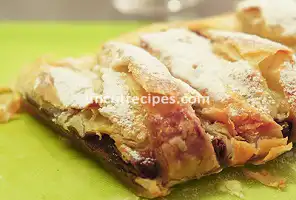
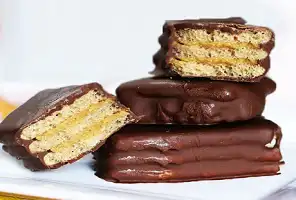
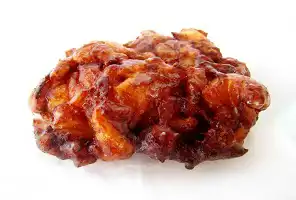

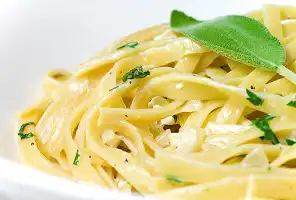
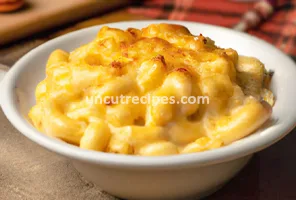
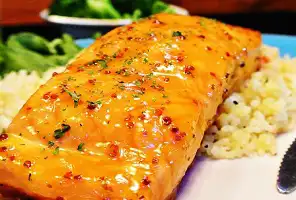

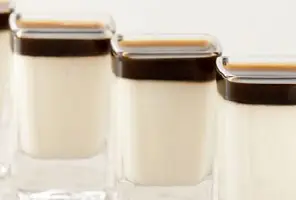


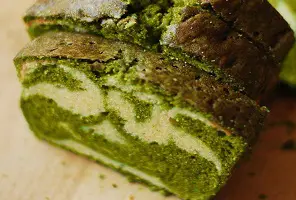
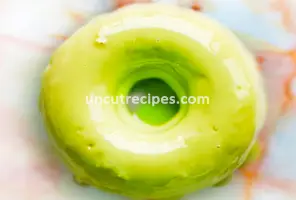
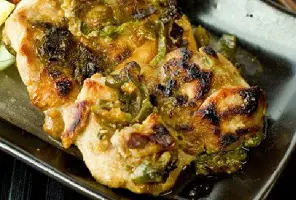
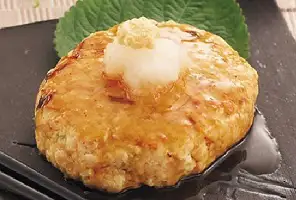
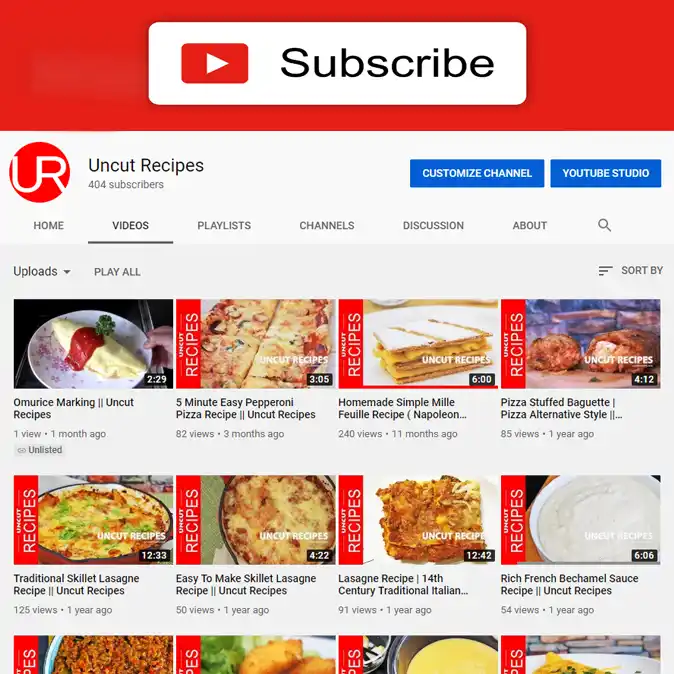
July 04, 2023
For the first time, I dared to venture into making chocolate cupcakes, opting for this recipe. It's safe to say, I'm hooked! This will be my go-to recipe for chocolate cupcakes forever. The flavour was just divine. Thanks!